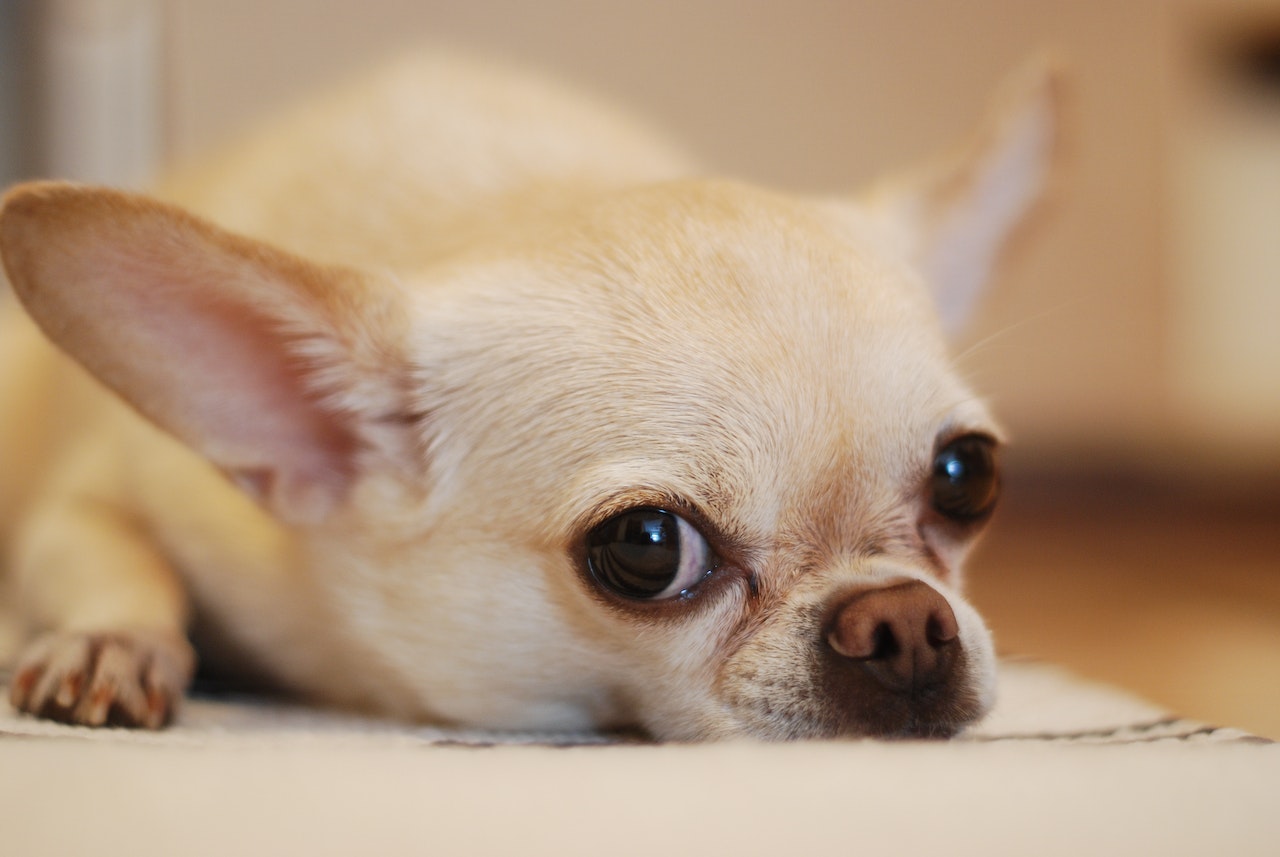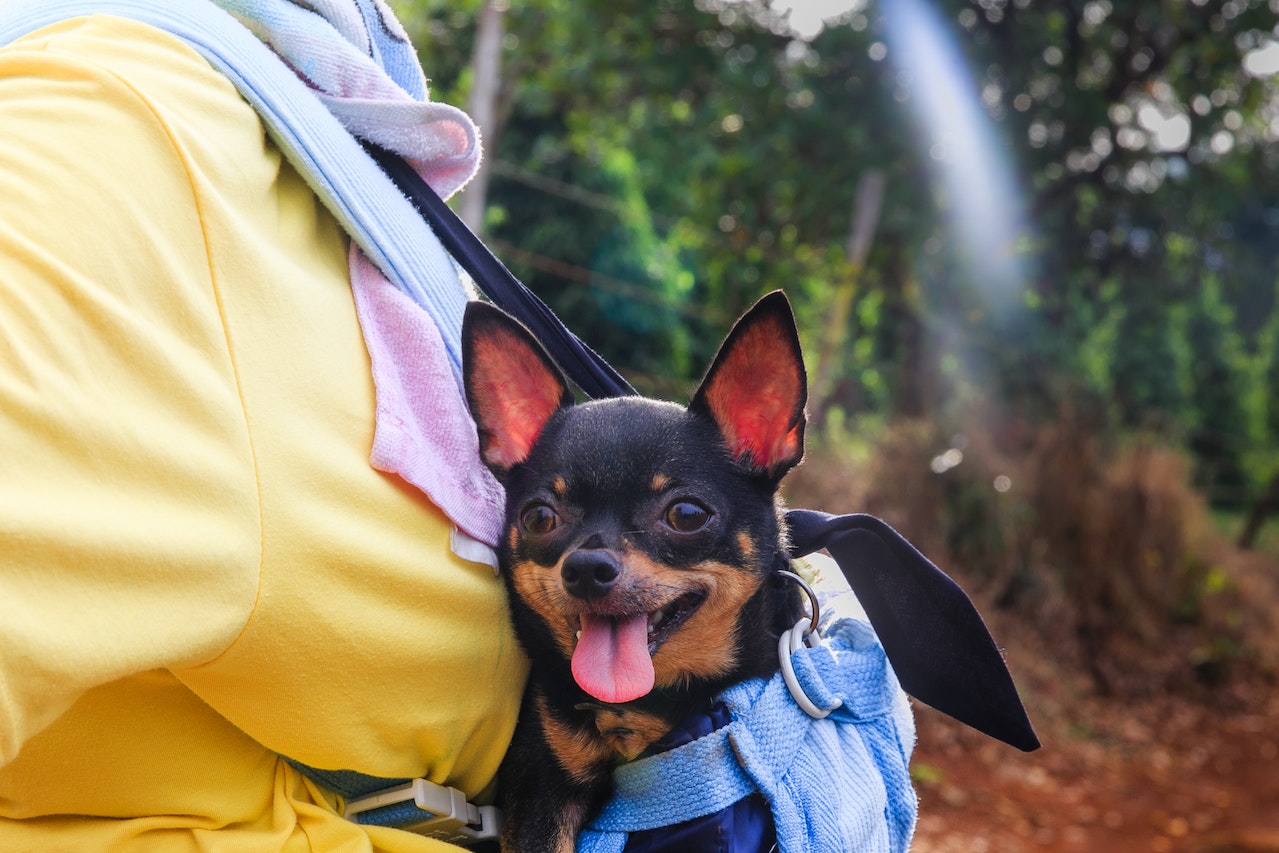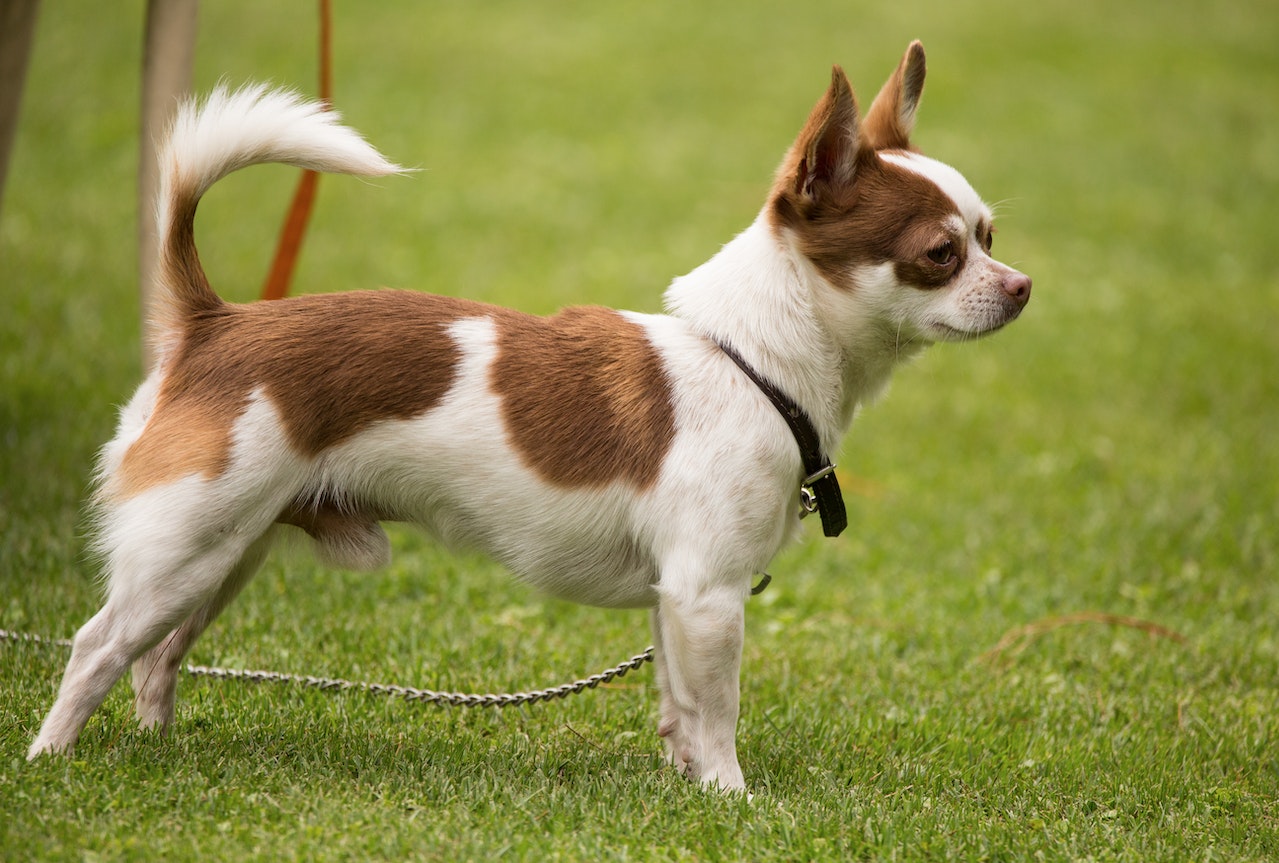Are you afraid about your chihuahua without teeth? When you were a kid, it was thrilling to lose a tooth because you knew you’d receive a visitation from the tooth fairy and some money. Chihuahua loses their teeth at about 30 weeks of age, and all these teeth were replaced by 42 new teeth that will remain in place until they reach adulthood. Although it is not natural for dogs to lose their adult teeth, it may happen for various reasons, the most common of which is periodontal disease or trauma.
So, what if your Chihuahua dog has lost all his or her teeth? You’ll be relieved to hear that, with some adjustment and additional care, Chihuahua dogs can survive without teeth, and, in most circumstances, it’s preferable to live with teeth that cause them pain. Here are some guides to help your chihuahua without teeth.
The Origins of Dog Dental Care
When you examine the history of animal dentistry, it seems that horses were the main emphasis. The Chinese were already performing horse dental treatment at about 600 BC. On the other hand, dentistry in dogs is a considerably more recent development.
The first dentistry school for animals was established in France in 1762. On the other hand, animal dentistry for tiny animals was invented in the twentieth century. As time passed, animal dentistry shifted to smaller animals, and we learned more and more about the need for oral care for dogs.
If dog owners were urged to clean their teeth five decades ago, they might have thought it absurd. Brushing a dog’s teeth, on the other hand, is a common practice and one that dog owners do freely.
Signs Your Chihuahua Is Having Teeth Problems

You don’t have to be a dentist to see if your dog has tooth issues. The most common symptoms to watch out for include loose teeth, bloody saliva, or discomfort, and your dog may be straining to start picking up or chewing food.
Furthermore, your dog’s feeding habits may have grown messy, and your dog has begun to drool or may make sounds when yawning or chewing. Looking closely at your dog, you may see some discharge or puffiness around the snout or face. Close inspection can allow you to detect various difficulties associated with oral illnesses, such as bleeding, receding, swollen gums, or poor breath. A veterinarian should address these symptoms as soon as possible, especially if your dog begins pawing at their mouth or has a decreased appetite.
🦷Chihuahuas Prone to Dental Issues
Although Chihuahuas are reasonably robust and resilient, the American Kennel Club considers them prone to dental problems. This implies that most Chihuahuas will have tooth issues, particularly later in life. Chihuahua dental issues often emerge when dogs are saved from neglectful settings like puppy mills or hoarders. These Chihuahua dental problems occur much younger than in dogs that are cared for by a loving family.
Preventative treatment is critical for maintaining excellent dental health, and Chihuahuas in these settings are often denied preventive veterinarian care if any at all. Puppy mills typically utilize water bottles similar to those used in small animal cages to hydrate the dogs. This bottle is often related to oral disorders.
Even Chihuahuas reared in good families may have tooth loss as they age due to bad genetics or an absence of regular dental treatment, paired with their lengthy life expectancy. In general, dogs make cleaning their teeth difficult. Tiny jaws make it more difficult to keep clean, and most dogs dislike having their teeth brushed. Because battling a dog to wash their teeth, particularly a tiny breed might result in damage, most owners avoid brushing their dog’s teeth.
🦷Chihuahuas Get Tooth Loss
Senior Chihuahuas will almost certainly need a tooth extraction. Some people may end up without teeth at all. Losing teeth alter certain aspects of their lives, but happily, it has little effect on their life.
Chihuahuas that have lost their teeth are unable to ingest hard food. Chewing bones isn’t any longer an option since it would harm their gums. Chihuahuas can hang their tongues out of their mouths, typically to one side, since they lack the teeth to retain their tongues in their mouths. As a consequence, they may drool a little more than a toothless dog.
Feeding a Toothless Chihuahua
Several reasons a chihuahua may be missing some or all of their teeth. Tooth decay is more common in older dogs; however, dogs of any age may need numerous teeth extraction owing to periodontal disease.
Chihuahuas without teeth may have a life comparable to dogs with teeth and may even be healthier and happier. Diseased teeth produce discomfort while chewing and increase the chance of the infection spreading to other systems through circulation. While tooth extraction may seem drastic, it may be the best decision for your chihuahua in the long term.
🦷Canned Wet Foods
Canned wet food is another excellent choice for feeding your toothed chihuahua. Many manufacturers provide wet food; therefore, you should have no trouble selecting something a chihuahua will like. Wet meals are available in various flavors, including salmon, chicken, and beef. You may need to experiment with various tastes to see which one your chihuahua prefers.
Check to ensure there are no huge bits in the canned food. If you detect any lumps, mix them with a fork before serving. The essential thing is that your dog gets enough food every day since it might be less motivated to eat after losing its teeth. Even after significant oral surgery, virtually all dogs resume regular feeding habits.
🦷Softened Kibble
Feeding a Chihuahua without teeth or missing their major chewing teeth is as easy as softening their kibble by adding fluids to soften the tough, crunchy portions. Adding boiled water, chicken broth, or roast beef to your chihuahuas’ favorite kibble and allowing it to sit for 5 minutes will improve the flavor and simplify the dish.
Because it tastes just like the meal they’re accustomed to, serving softened dry dog food eases your chihuahua’s dietary transition. After the kibble has softened, mix it up with a fork to remove any pieces.
The Best Foods For Chihuahua Without Teeth

Chihuahuas without teeth can still eat like tiny kings; their cuisine just needs a few adjustments:
🦷Wet food
Wet or canned foods are ideal since they are easy to combine with the gums and absorb.
🦷Dry Food
If your chihuahua is finicky and prefers a certain kind of dry food, you can continue to feed it by soaked the kibble in hot water and mashing it up with a fork or spoon to give it the proper consistency for the dog to eat.
🦷Freeze Dried Food
Create freeze-dried meals that can be broken down into little bite-sized bits. These meals are easy to chew in the first place and maybe moistened to make them softer.
🦷Homemade Diets
To provide homemade food, consult a veterinarian to identify nutritionally complete dishes prepared from simple items. Rice, for example, is a frequent component in dog food, and a dog without teeth could easily consume it. Choking eating rice is also unlikely owing to the small size of the grains.
Treats for a Chihuahua Without Teeth
Even if hard snacks and chewing bones are no longer available, there are still plenty of tasty choices! Here are some treats for your chihuahua with no teeth.
▪️Try freeze-dried meats, which almost melt in dogs’ jaws and can be readily split into little bite-sized pieces. Most pet supply businesses sell freeze-dried snacks.
▪️Shredded cheddar or yogurt are other acceptable alternatives; however, keep these doses short since too much dairy may induce stomach problems.
▪️Another good option is peanut butter, which may be placed in a toy for enjoyment.
▪️Small banana slices may also be served.
If you like baking for your dog, here are some soft treat recipes:
▪️Oatmeal, pumpkin, and peanut butter
▪️Bread with Bananas
▪️Smoothie with Greens
▪️Chicken Snacks
▪️Salmon Snacks
▪️Miniature Turkey Meatloaf
Proper Care for Chihuahua Without Teeth

Even though your dog no longer has teeth to brush, it is still crucial to keep the mouth clean. Work with your dog’s veterinarian to find strategies to make your dog healthy in the future. No matter what sort of food you feed, your chihuahua always provides fresh water. Daily hydration is essential for general health and keeping a dog’s mouth clean.
If your chihuahua doesn’t drink much, consider offering water as a fountain since circulating water may tempt your small princess to drink enough. The dogs like this water fountain that we use. I kept the old water dish around for a time in case they were afraid of the fountain, but they just want to drink from it now, which is healthier for them.
You must be careful of the size of the food bits offered to your dog at mealtimes. Chihuahuas without teeth cannot chew food into acceptable size bits for swallowing; thus, you must give him extra little portions to avoid choking, the same as the way you prepare the food for a human newborn beginning to eat.
It is also a good idea to learn dog first aid if your dog eats something too large and chokes on it. Chihuahua tooth issues are typical symptoms of dental illness, but your dog may live a happy life with the correct veterinarian treatment. While eating is a passion for many little dogs, your chihuahua may still enjoy a range of tasty and healthy dishes with some changes.
🦷Oral Hygiene
Oral hygiene may help prevent mouth disease even when no teeth are left. Squirting a tiny quantity of Chlorhexidine solutions in each side of your dog’s mouth twice daily after meals is the simplest way to do this in a pet with no remaining teeth. If there are any remaining teeth, brush them before squirting the chlorhexidine solution into the mouth.
Science Behind Chihuahua Without Teeth
When a Chihuahua is between three and six weeks old, he or she develops 28 teeth, often known as milk teeth. Chihuahua pups do not consume much hard food at this age, so they do not need molars; their teeth are sharp regardless.
A chihuahua puppy loses its milk teeth at about four months and develops 42 new adult teeth. This might be concerning when a dog loses an adult tooth or teeth. Periodontal disease is the most common cause of adult loss of teeth in dogs.
This occurs when swollen gums are accompanied by inflammation of a bone and tissues associated with tooth support. According to studies, this condition affects 85% of dogs aged four and more and not only causes tooth loss but may also cause various other health difficulties. Another cause of tooth loss is trauma, such as if your dog fights with another dog or experiences a head injury.
Frequently Asked Questions
What should a Chihuahua’s teeth look like?
Chihuahua incisors are largely utilized for scraping. When they exhibit their teeth, their canines are generally visible behind the incisors, which are long and pointy, resembling fangs. These teeth are utilized for slicing meat. Premolars are teeth located immediately behind the canines.
Is tooth loss in little dogs common?
Because smaller breeds develop faster than bigger breeds, they lose their teeth more quickly. Because these needle-sharp canine teeth are so small, you may not notice them coming out. Many pups swallow them during eating or have them fall out during play.
Can a Chihuahua survive without teeth?
You’ll be relieved to hear that, although it takes some adapting and additional care, dogs can survive without teeth, and, for most situations, it’s preferable to live having teeth that cause them pain.
Why are so many Chihuahuas toothless?
Chihuahuas’ teeth do not regenerate; thus, pet owners must monitor their dental health. Even though they are low-maintenance, these dogs are prone to tooth issues; thus, they seldom have a full set with 42 teeth, often resulting in missing teeth.
What happens when a dog’s tooth dies?
When a tooth dies, all soft tissues within the hollow area of the tooth (root canal) decay, begin to break down, and flow out the end of the root. This causes inflammation in the region, commonly leading to bone deterioration, root damage, and infection.
Can dogs have dental implants?
YES! Some individuals believe that dentures are solely used on humans for cosmetic purposes to assist in avoiding sadness and poor self-esteem. However, it is quite feasible for the dog to obtain dentures too! However, it is not a normal treatment, and the dangers and costs must be carefully weighed.
Final Thoughts
We discovered that dental care is vital regardless of the number of dog teeth your chihuahua has left. Find and stick to a regimen that fits your pet. Food does not have to be a chore. While the forms of their food may vary to fit their reduced chewing skills, the quality and nutrients of their food intake do not have to. Finally, we discovered that whether your dog has teeth or not, your chihuahua needs the same fundamental things as any other dog: something delicious, something entertaining, and, obviously, your full attention and unconditional affection. Do you want to know what is the rarest chihuahua? Click here!
Here at ILoveChihuahua, we share our personal experiences as owners of this feisty breed. We talk about recommended methods, dog supplies picks, and advice on common Chihuahua problems. Our goal is to promote responsible dog ownership, so there would be fewer Chihuahuas in shelters.


